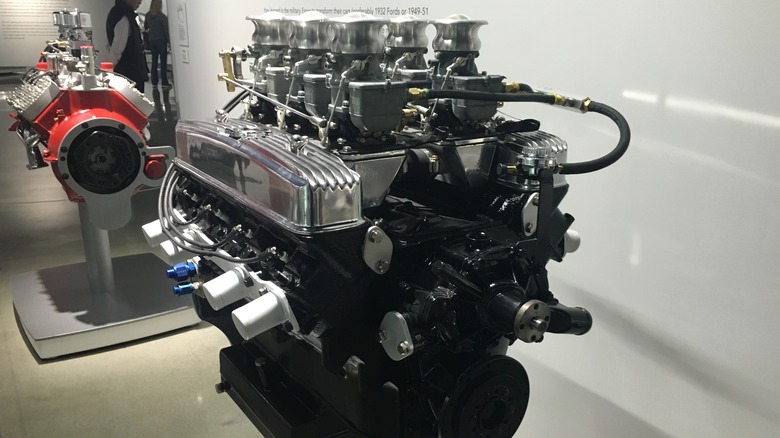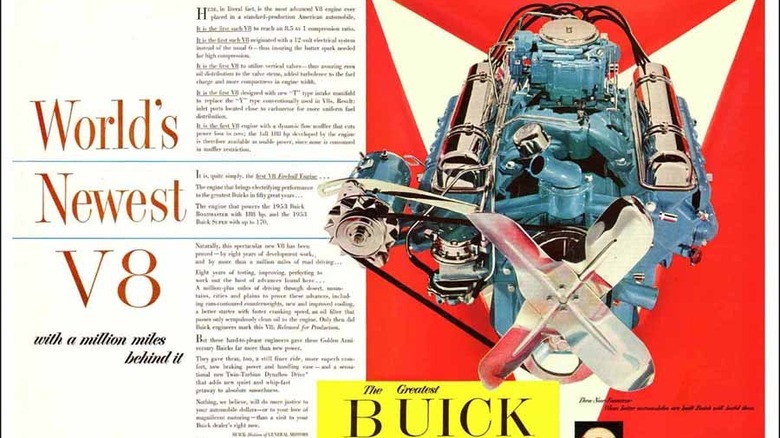Here's What Made The Buick Nailhead V8 Engine So Special
Every self-respecting motorhead has a special place in their piston-driven hearts for the great American V8s. Choosing a favorite among the masterclass of gas-guzzling, wheel-spinning 20th-century monstrosities is like choosing between your children. Everyone has their own opinion. We've even acknowledged great debates on the subject: big block or small block?
At the same time, there are clear frontrunners. The immortal small-block Chevy has to win on longevity and versatility: that beast was born in 1955 and is still getting planted in brand-new machines today. If you want the most grunt for your buck, you might be happier with a Chrysler HEMI or a Ford 5.0. Different strokes.
The Buick V8 Nailhead, too often overlooked among its mighty GM kindred, is the connoisseur's choice. An extraordinary engine with an equally remarkable operational history, the Nailhead turned up everywhere, from powerful muscle cars to support tech for the fastest plane that has ever flown.
An also-ran that became a masterpiece
The Nailhead had a respectable operational life, roaring onto the road from 1953 to 1967. The Nailhead powered some classic rides, including the best years of the Buick Electra and Skylark, but nothing to challenge Ford's 5.0-powered Mustangs.
Where Buick starts to catch up with more traditional classics is sheer power. With nicknames like "Fireball V8" and "Wildcat V8," the Nailhead ranked with the mightiest performers of its day. The final build, sold from 1963 to 1966, delivered eight cylinders, 425 cubic inches, and 340 horsepower. In its day, the Nailhead's design ethos fell between NASA's Saturn V and Wile E. Coyote strapping on an ACME rocket.
That uncompromising commitment to motoring muscle set the Nailhead's fate. It was an engine for engine lovers, a love letter to gasoline-powered engineering. Without the marginal adjustments for practicality made by GM and Ford's more accessible V8 offerings, the Nailhead was doomed to burn bright and brief.
But even while the Nailhead's sales numbers faded, its niche adoption soared. Unlicensed drag racers and other hobbyists had adored the Nailhead since the 50s, setting absurd records. Dragstrip legend Tommy Ivo was the first racer to run a sub-9 second quarter mile, courtesy of two Nailheads mounted side by side. Machinists still use it as a static shop engine. Auto Evolution reports what must be the most bizarre implementation: it was used as a starter motor for jet turbines on the SR-71 Blackbird.

